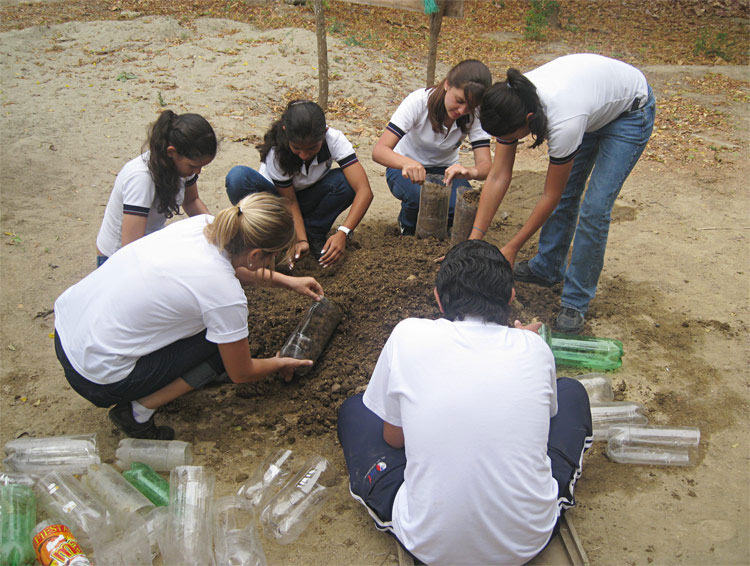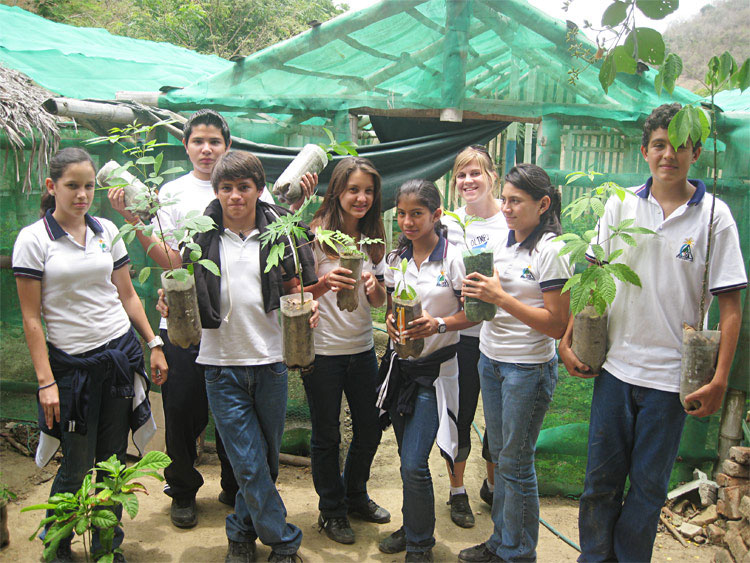September 20-October 6, 2010
The dry season work continues. A few light drizzles have kept the trees moist enough to avoid having to water. In fact, the trees planted this past year look healthy enough so as to practically not need any manual watering at all. This is promising for the potential expansion of the revegetation project, since watering planted trees is such a time consuming factor due to its labor intensiveness.
There has been a real lull in volunteers lately, our only volunteer Milena (thanks for all your help!) from Germany returned to her home country and Orlando and I have been managing on our own. I used the opportunity to take care of some personal paperwork in Quito and Guayaquil, while Orlando has kept the greenhouse in exceptional condition.
The big news recently has been political, involving President Correa and what appears to have been an attempted coup plot by political opposition, possibly the CIA, and a small faction of the National Police. Fortunately, democratic processes have quickly grown firm roots in Ecuador and the destabilization was contained, only disrupting business for 1-2 days.
Despite this bold, media attention-grabbing political stunt by the minority opposition, the underlying political friction that the President is currently facing is actually also coming from the progressive left (popular, socialist, and indigenous groups – members of what is commonly referred to as the ‘Bolivarian Revolution’) and not the conservative right (upper-class, neo-liberal practitioners). Correa’s political support base has been slowly eroding due to his failure to “progress” the country enough.
His reforms have fallen short of the wishes of the indigenous populations, failing to fully protect their lands from mining and oil extraction operations, for example. The Yasuni ITT plan is advancing, but slowly, and at a stuttered pace, and its success is still not guaranteed. Other groups, such as teachers and professors feel as though his administration excludes them from decision-making processes.
So while conservatives are complaining about Rafael Correa’s similarities to Hugo Chavez and Fidel Castro, and are using the recent events to point out the shortcomings of his administration and the instability of the country he governs, the peoples’ movement is seriously questioning his devotion to the Bolivarian Revolution and their support for him is subsequently wavering.
The most significant aspect of the September 30th coup attempt was the amazing response by the people to defend the democratic processes of their country, which are established by the overwhelmingly popular new constitution of 2008, seemingly regardless of who is in office. Thousands poured out into the streets showing their support for the democratically elected president, despite a strike by Police officers that was underway. A similar coup attempt was orchestrated in 2002 in Venezuela and was almost successful. Guatemala fell victim to a right-wing coup only last year. These events in Ecuador represent a strong victory for democracy in the country and the region.
Looking into the future, Correa’s support base has been temporarily boosted beyond normal levels due to the masses showing their support for the country’s democracy, but he will have to take their considerations much more seriously if he wants to keep them behind him.

In terms of advancing the revegetation work in Bahia, we continue to maintain and produce new seedlings at the greenhouse. Seedbeds of Bototillo and more Algarrobo were planted. Seedlings are transplanted as needed and the supply of trees continues to grow. Progress on new sites continues and half of the holes at the site behind the greenhouse have been dug. Additionally, more bamboo stakes for marking trees have been chopped.



Nadine returned to the greenhouse to spend part of a morning at the greenhouse working with her class of students from the Inter-Americano High School. They helped mix soil and fill three-litter bottles with it, while practicing their English. She says it is likely that they will be able to visit the greenhouse on a regular basis to help us out. Each student took a tree back to be planted as part of a project at their school.
Pásalo bien,
Clay

Thanks for sharing. I read many of your blog posts, cool, your blog is very good.
I don’t think the title of your article matches the content lol. Just kidding, mainly because I had some doubts after reading the article.
Can you be more specific about the content of your article? After reading it, I still have some doubts. Hope you can help me.